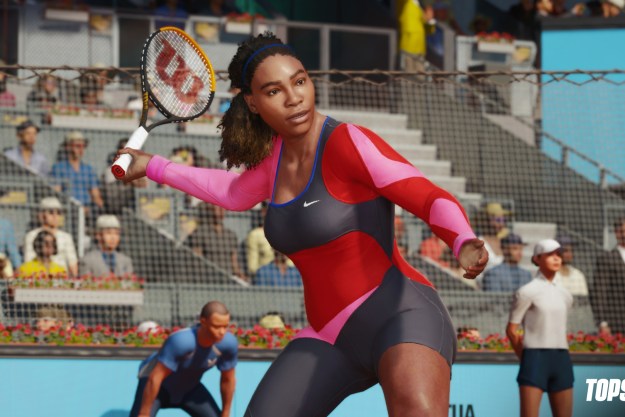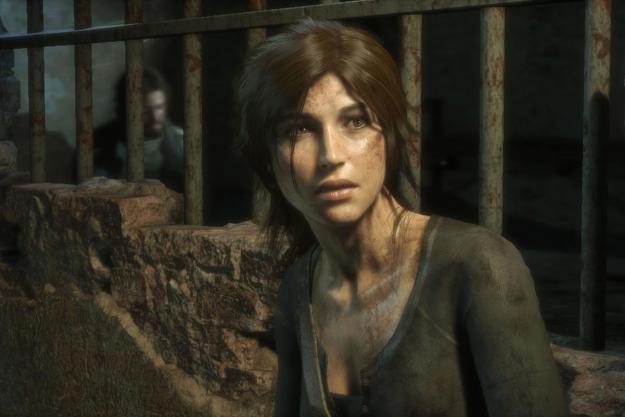
In a 7-2 ruling today, the Supreme Court upheld a Federal Appeals Court ruling that overturned California legislation banning the sale of mature-rated games to minors. The law would have also punished sellers with a $1,000 fine for each instance, putting M-rated video games on the same level as pornography and cigarettes. The Supreme Court verdict was a major victory for the video game association and its allies in the entertainment industry that claimed the law went too far and infringed on the First Amendment rights of the video game industry. The entertainment allies also claimed that the law would massively impact the video game industry’s viability, as retailers would be much less inclined to sell games and take the risk. The Court agreed, and ruled that “Even where the protection of children is the object, the constitutional limits on governmental action apply.”
The ruling puts to rest the controversial law introduced by the Californian legislature in 2005. The law claimed a correlation between violent video games and a rise of violent behavior in children that played those games. Several studies were cited, and the nature of video games was said to be more influential than other media due to the interactive aspect.
The law was immediately challenged by the Video Software Dealers Association (VSDA) who brought suit. Before the law had time to be enacted, a District Court judge issued preliminary injunction blocking it. The District Court ruled the law unconstitutional, and the judgment stated that the evidence of a connection between violence in children and video games was insufficient. The ruling also disputed the claim that the interactive nature was any more harmful than any other media. The studies cited were also called into question.
California immediately appealed, and then Governor Schwarzenegger — who for the sake of irony it should be mentioned built his career on violent movies — vowed to fight on. The case then went to the Ninth Circuit Appeals Court, who also ruled in favor of the VSDA and claimed that it violated the First Amendment. The case was then appealed to the Supreme Court, which agreed to hear it. Arguments were heard in November.
All 92-pages of the case, which is officially known as Brown, Governor of California, Et Al. v. Entertainment Merchants Association Et Al. (or Brown v. Entertainment Merchants Assn. as it will be more commonly referred to), were released earlier today. In the 7-2 ruling , Justice Scalia delivered the opinion of the court on behalf of Justices Kennedy, Ginsburg, Sotomayor and Kagan. Justice Altio concurred with the ruling but filed his own opinion that Chief Justice Roberts joined. Justices Thomas and Breyer each filed dissenting opinions.
Like the protected books, plays, and movies that preceded them, video games communicate ideas — and even social messages — through many familiar literary devices (such as characters, dialogue, plot, and music) and through features distinctive to the medium (such as the player’s interaction with the virtual world). That suffices to confer First Amendment protection. Under our Constitution, “esthetic and moral judgments about art and literature . . . are for the individual to make, not for the Government to decree, even with the mandate or approval of a majority.”
The general consensus of the court was that the law went too far in its scope and infringed upon the First Amendment rights of the video game association. It also explained the Court’s rationale for each of the primary points that the lawyers for the Californian law claimed.
Since California has declined to restrict those other media, e.g., Saturday morning cartoons, its video-game regulation is wildly underinclusive, raising serious doubts about whether the State is pursuing the interest it invokes or is instead disfavoring a particular speaker or viewpoint. California also cannot show that the Act’s restrictions meet the alleged substantial need of parents who wish to restrict their children’s access to violent videos. The video-game industry’s voluntary rating system already accomplishes that to a large extent. Moreover, as a means of assisting parents the Act is greatly overinclusive, since not all of the children who are prohibited from purchasing violent video games have parents who disapprove of their doing so.
California continued to cite a handful of studies as one of the primary reasons in claiming that violent video games have a negative effect on children. The studies have been repeatedly criticized by each court that has reviewed the data, and the Supreme Court is no different.
The State’s evidence is not compelling. California relies primarily on the research of Dr. Craig Anderson and a few other research psychologists whose studies purport to show a connection between exposure to violent video games and harmful effects on children. These studies have been rejected by every court to consider them, and with good reason: They do not prove that violent video games cause minors to act aggressively (which would at least be a beginning). Instead, “[n]early all of the research is based on correlation, not evidence of causation, and most of the studies suffer from significant, admitted flaws in methodology.” They show at best some correlation between exposure to violent entertainment and minuscule real-world effects, such as children’s feeling more aggressive or making louder noises in the few minutes after playing a violent game than after playing a nonviolent game.
Even taking for granted Dr. Anderson’s conclusions that violent video games produce some effect on children’s feelings of aggression, those effects are both small and indistinguishable from effects produced by other media. In his testimony in a similar lawsuit, Dr. Anderson admitted that the “effect sizes” of children’s exposure to violent video games are “about the same” as that produced by their exposure to violence on television.
The opinion of the court is that the California legislation both overstepped its bounds, and tried to classify video games unfairly. The ruling cites several instances in pop culture that are also graphically disturbing, including literature that is taught in school to children of varying ages. The brutal murder of the character Piggy in William Goulding’s Lord of the Flies is mentioned, as is Homer’s The Odyssey, when Odysseus blinds Polyphemus the Cyclops. Grimm’s Fairy Tales were also specifically mentioned, as they “contain no shortage of gore” but are meant for children of a young age.
The interactive nature of video games was also a key point in the arguments from California, and the Court weighed in on that as well.
The better it is, the more interactive. Literature when it is successful draws the reader into the story, makes him identify with the characters, invites him to judge them and quarrel with them, to experience their joys and sufferings as the reader’s own.
Justice Alito and Chief Justice Roberts both agreed with the ruling but for different reasons, and Alito issued his own opinion. Alito and Roberts agreed with the spirit of the law, but felt that it went too far and was not presented properly, which could leave an opening—albeit a narrow one—for future efforts to further regulate the sale of M-themed video games.
“I would hold only that the particular law at issue here fails to provide the clear notice that the Constitution requires. I would not squelch legislative efforts to deal with what is perceived by some to be a significant and developing social problem. If differently framed statutes are enacted by the States or by the Federal Government, we can consider the constitutionality of those laws when cases challenging them are presented to us,” Alito wrote.
Justice Thomas and Breyer both dissented and wrote their own opinions. Thomas claimed that the law was just, as it left the decision of whether or not a minor should play the game to the parents.
“‘The freedom of speech,’ as originally understood, does not include a right to speak to minors without going through the minors’ parents or guardians,” Thomas wrote.
Breyer opined that the Court should yield to the legislature in this type of case, especially when it involves technical matters.
“In my view, the First Amendment does not disable government from helping parents make such a choice here — a choice not to have their children buy extremely violent, interactive video games, which they more than reasonably fear pose only the risk of harm to those children,” Breyer wrote.
But despite the two dissenting opinions, the Supreme Court has ruled, and after six years of contentious litigation that rallied supporters on both sides, the California law has been overturned. That won’t necessarily stop the California Legislature from attempting to introduce a new law with a similar slant but a more specific focus. But if it does, the opponents will now have this case to rally around. And in the words of the Supreme Court “the basic principles of freedom of speech . . . do not vary.”


